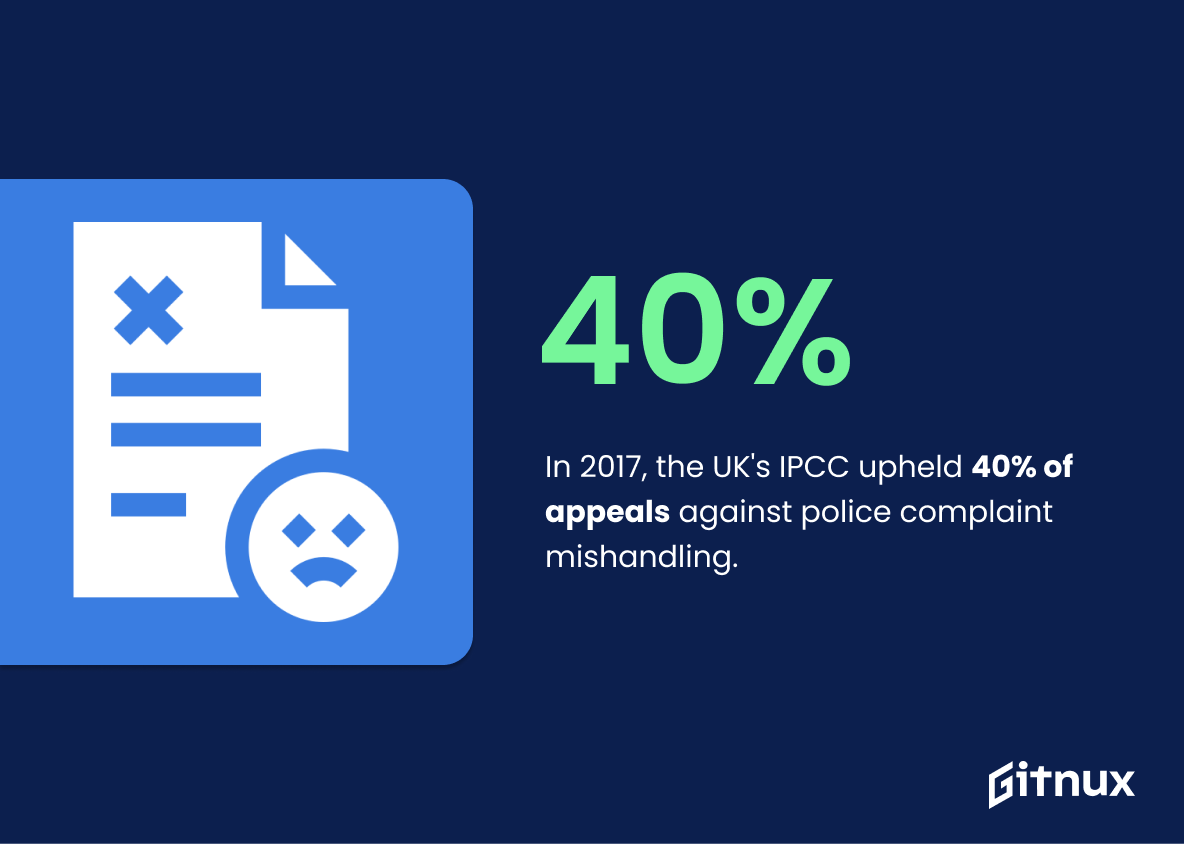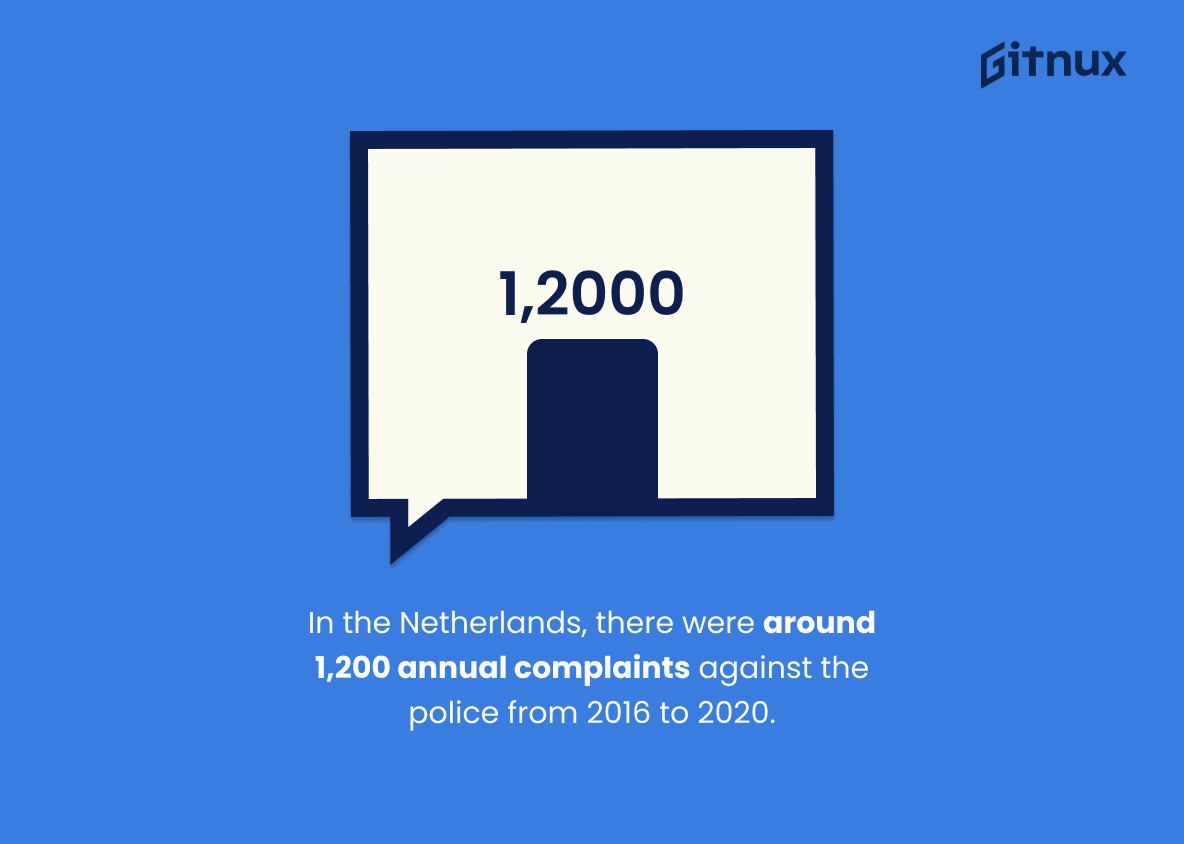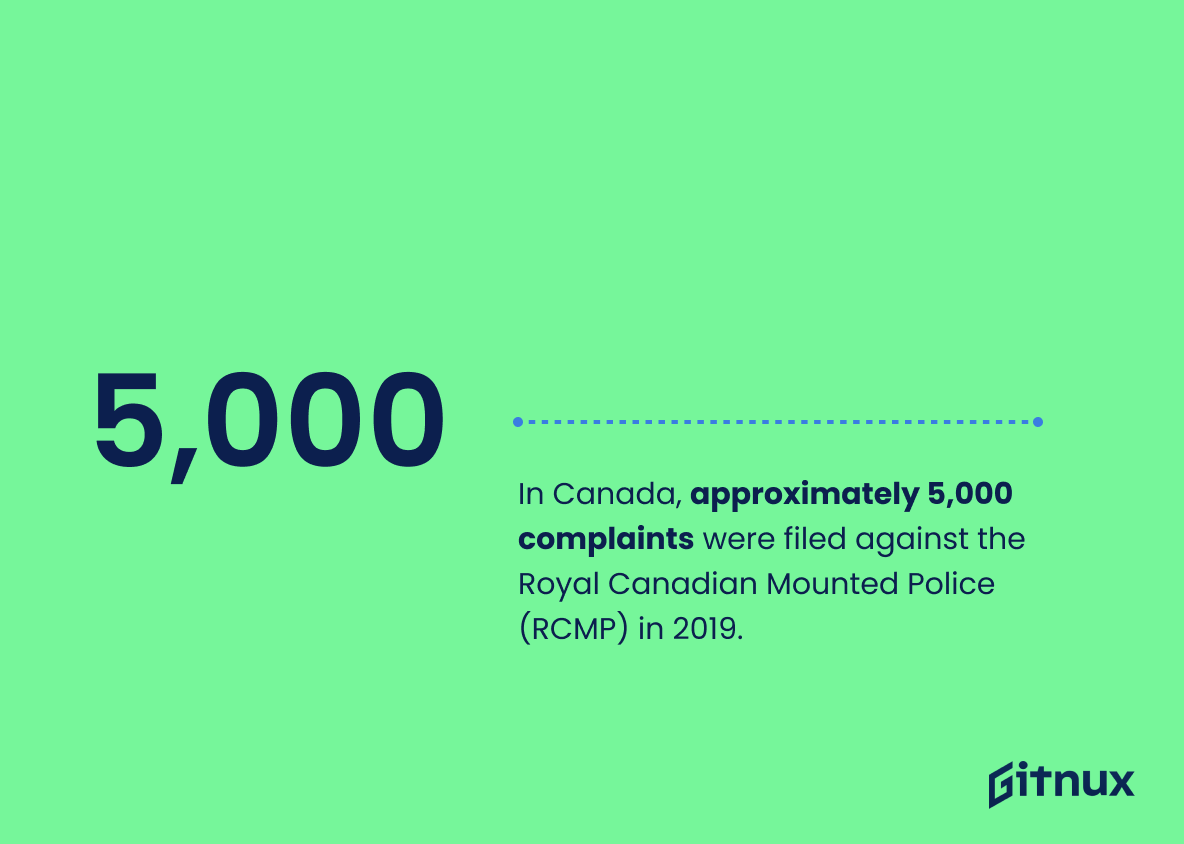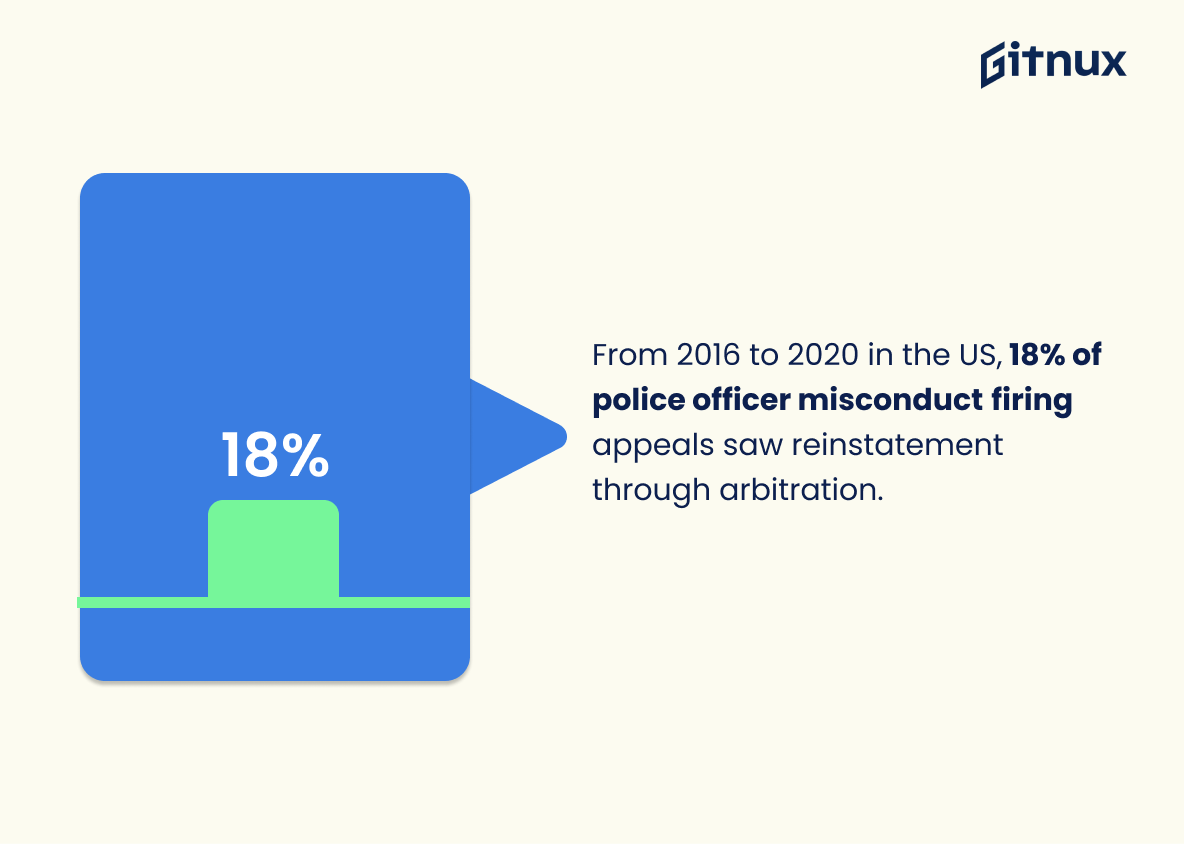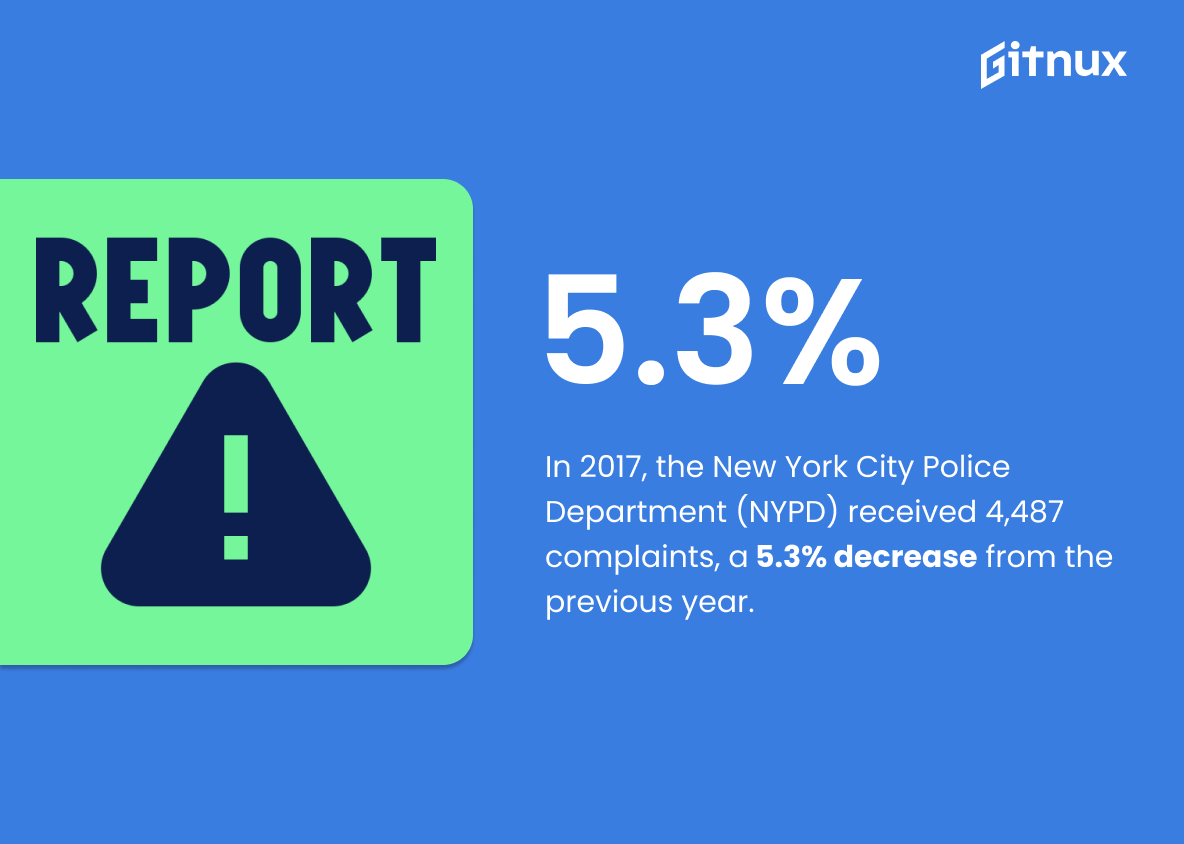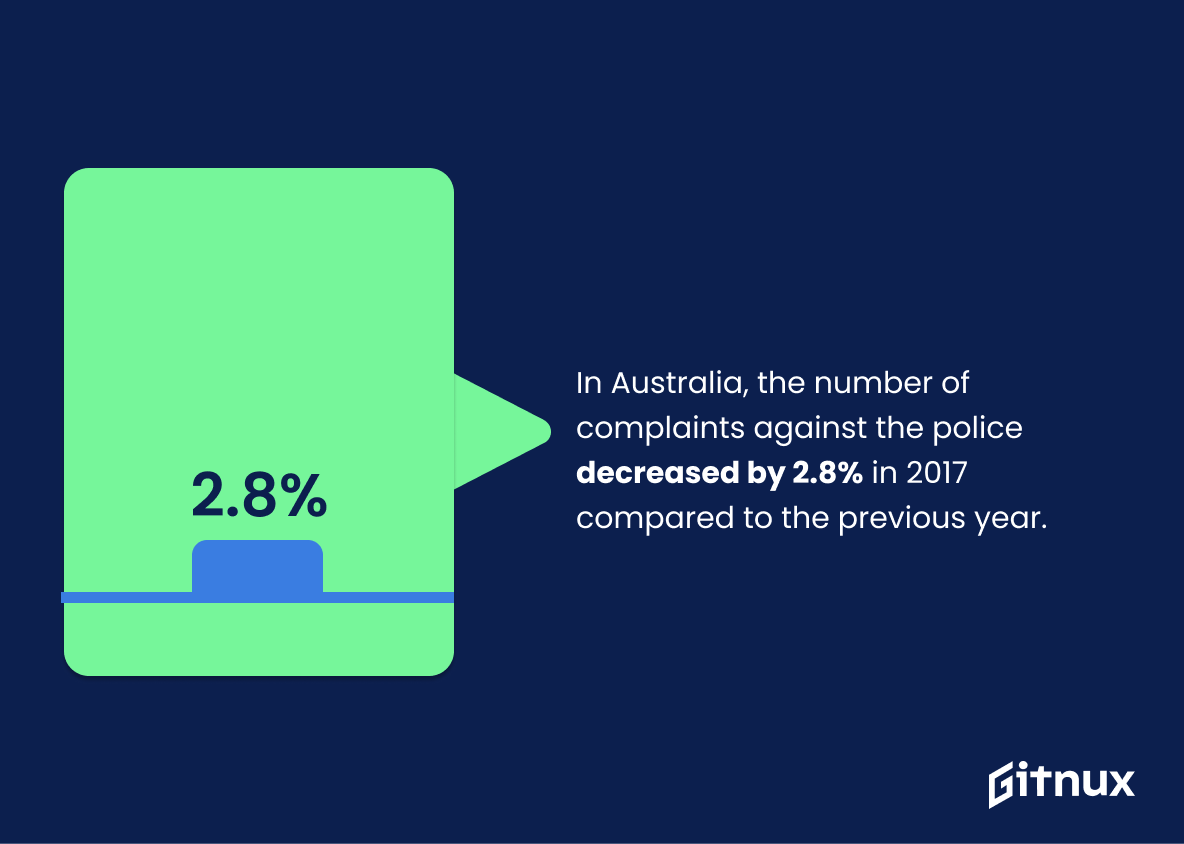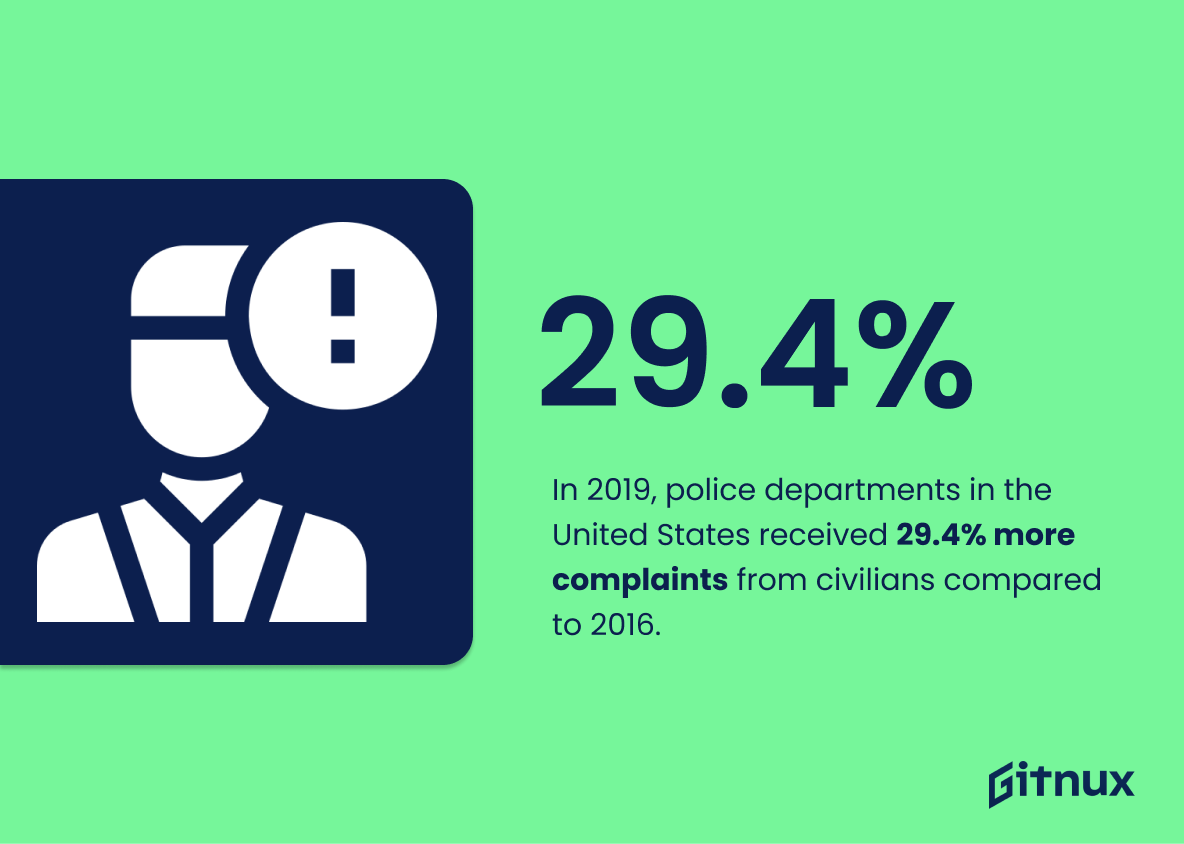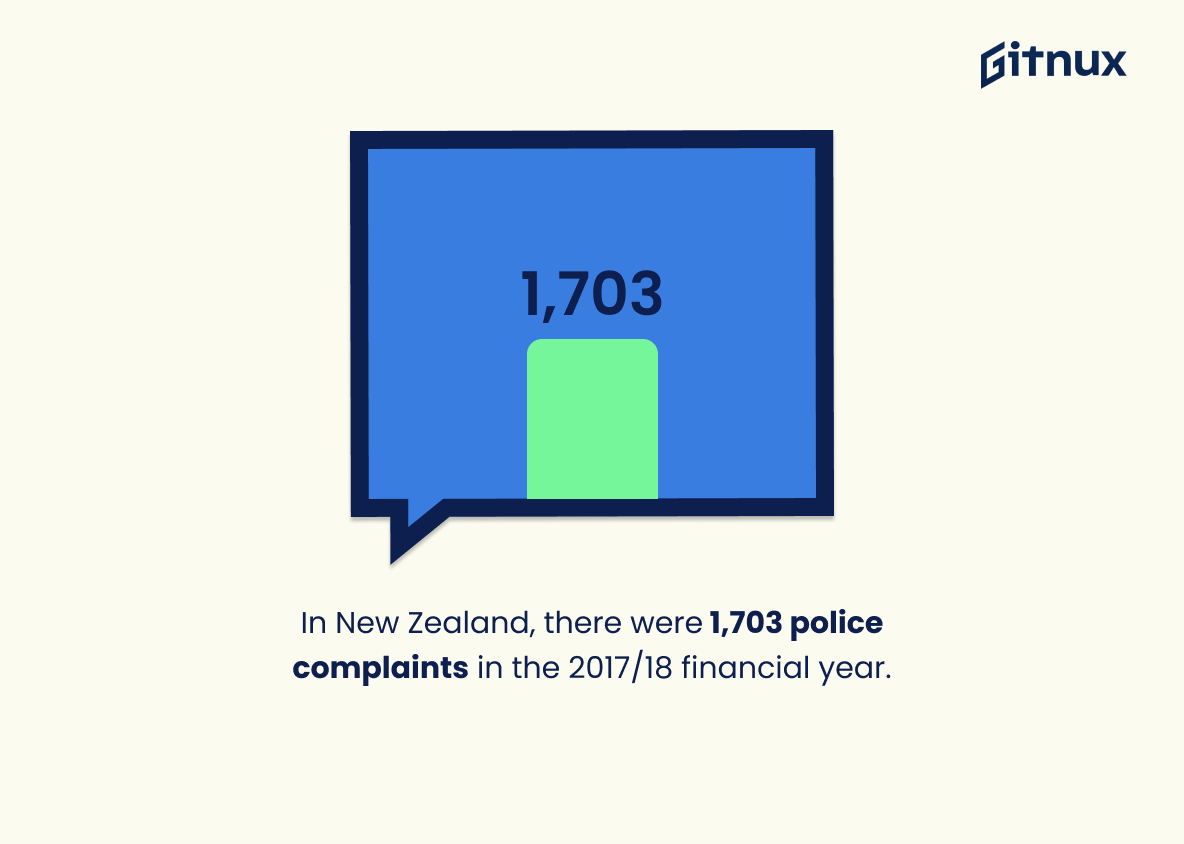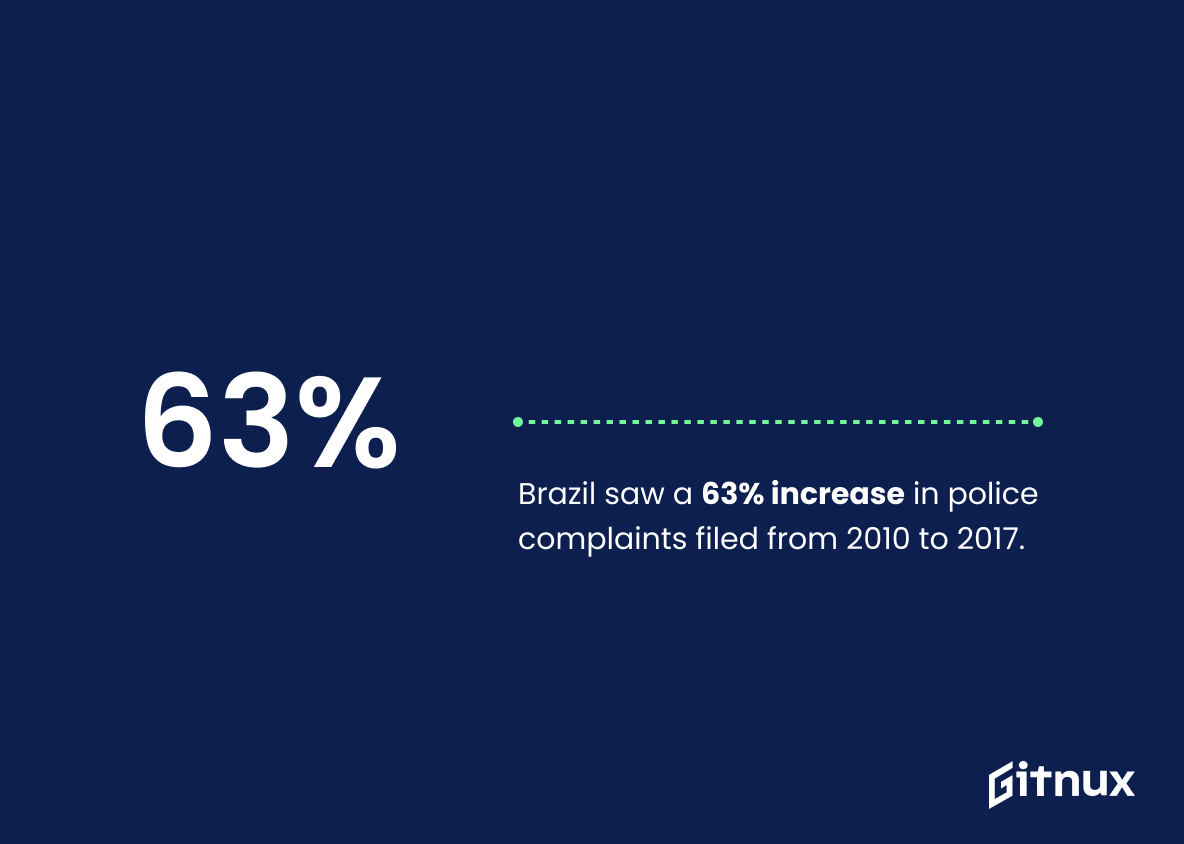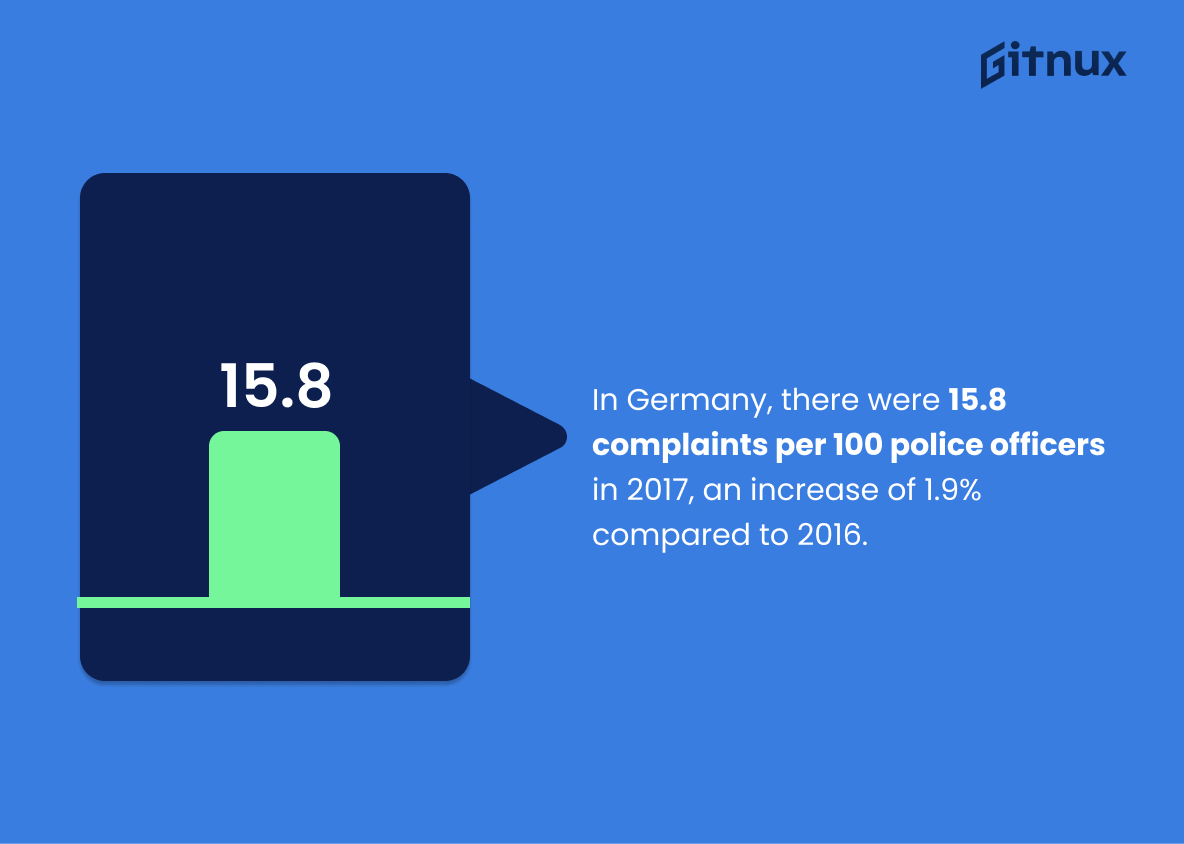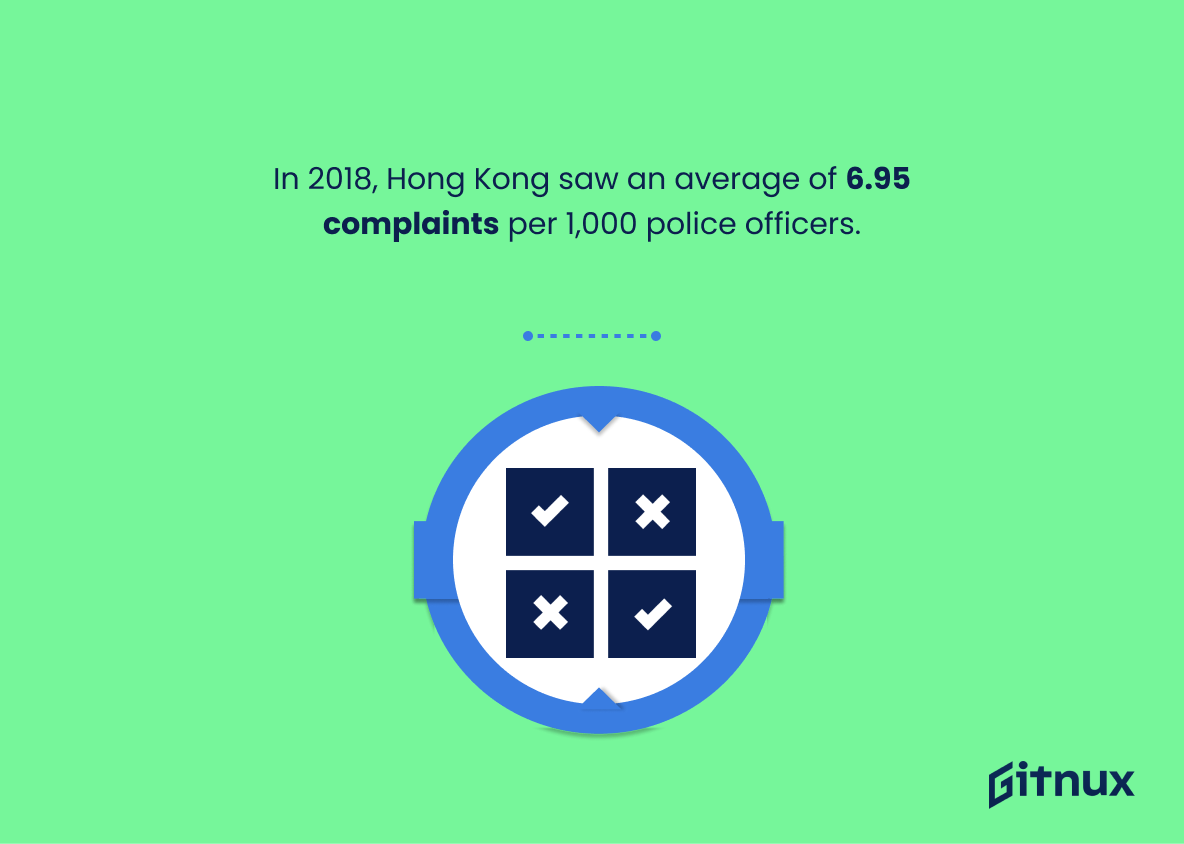Police complaints are an important indicator of the effectiveness and accountability of law enforcement agencies. This blog post will explore police complaint statistics from around the world, including data on misconduct categories constituting excessive force or harassment, public complaints filed against police forces in England and Wales, use of force-related complaints in the United States, appeals upheld by Independent Police Complaints Commission (IPCC) in UK for unsatisfactory handling of cases, number of reported complaints against Dutch police between 2016 to 2020 , Royal Canadian Mounted Police (RCMP) receiving 5 thousand complains in 2019 , arbitration cases appealing officers’ firings for misconduct being successful with 18% success rate Japan having 655 legitimate complainants out 52.4%, New York City Police Department (NYPD) receiving 4487 complains with a decrease by 5.3%, South Africa witnessing 21% increase over 2011-2017 period India registering 70767 complains increasing by 4.78 % Australia recording 2.8% decrease 2017 compared to previous year Scotland seeing 5919 complainants 6 percent more than last year US getting 29 .4 % more civilian compliants 2018 compared to 2016 Mexico tripling serious human rights violation related claims 2017 -2018 Philippines filing 5314 claim 2020 New Zealand 1703 financial year ending 2018 Brazil 63 % increase 2010 – 2017 Germany 15 . 8 per 100 officer 1 . 9 percent rise from 2016 Hong Kong 695 per 1000 officers 2018 respectively..
This statistic is a stark reminder of the prevalence of excessive force and harassment in police complaints. It highlights the need for greater oversight and accountability in police departments, as well as the need for better training and education for officers to ensure that these types of complaints are minimized. It is a call to action for police departments to take a closer look at their practices and policies to ensure that the public is being served in a safe and respectful manner.
In 2018, the police force in England and Wales received 31,671 public complaints, equivalent to one complaint per ten officers.
This statistic is a telling indication of the level of dissatisfaction with the police force in England and Wales. It suggests that for every ten officers, there is at least one complaint lodged against them, highlighting the need for greater accountability and transparency in the police force.
Police Complaints Statistics Overview
In 2017, the Independent Police Complaints Commission (IPCC) in the UK upheld about 40% of appeals against unsatisfactory police handling of complaints.
This statistic is a telling indication of the effectiveness of the Independent Police Complaints Commission (IPCC) in the UK in ensuring that police handling of complaints is satisfactory. It demonstrates that the IPCC is taking action to ensure that complaints are being addressed and that the police are held accountable for their actions. This is an important statistic to consider when discussing police complaints statistics, as it provides insight into the effectiveness of the system in place to ensure that complaints are being handled appropriately.
In the Netherlands, between 2016 and 2020, there were approximately 1,200 complaints reported against the police each year.
This statistic paints a vivid picture of the prevalence of police complaints in the Netherlands over the past four years. It serves as a stark reminder that, despite the efforts of law enforcement, there is still a need for greater accountability and transparency in the way police officers conduct themselves. This statistic is a call to action for the Dutch government to take steps to ensure that citizens are able to report any misconduct they experience without fear of retribution.
In Canada, approximately 5,000 complaints were filed against the Royal Canadian Mounted Police (RCMP) in 2019.
This statistic is a stark reminder of the prevalence of complaints against the Royal Canadian Mounted Police (RCMP) in 2019. It serves as a powerful indicator of the need for greater accountability and transparency in policing in Canada. It is a call to action for the RCMP to take steps to address the issues that have led to such a high number of complaints.
In the United States, between 2016 and 2020, 18% of arbitration cases appealing police officers’ firings for misconduct were successful and saw the officers reinstated.
This statistic is a telling indication of the prevalence of police misconduct in the United States. It shows that even when officers are held accountable for their actions, there is still a significant chance that they will be able to get away with it. This highlights the need for more effective measures to ensure that police officers are held to a higher standard of conduct and that those who break the law are held accountable.
In Japan, a total of 655 complaints against police were filed in 2018, with 52.4% being considered legitimate.
This statistic is a telling indication of the state of police complaints in Japan. It reveals that a significant portion of complaints are being taken seriously and investigated, suggesting that the Japanese police force is taking steps to address grievances and ensure accountability. This is an important point to consider when discussing police complaints statistics, as it shows that the system is not completely broken and that there are measures in place to ensure that complaints are taken seriously.
In 2017, the New York City Police Department (NYPD) received 4,487 complaints, a 5.3% decrease from the previous year.
This statistic is significant in the context of police complaints statistics because it indicates a decrease in the number of complaints filed against the NYPD in 2017. This could be a sign that the NYPD is taking steps to improve its relationship with the public and address any issues that may have been raised in the past. It could also be a sign that the public is becoming more aware of their rights and more willing to speak up when they feel their rights have been violated. Either way, this statistic is an important indicator of the progress being made in the area of police complaints.
In South Africa, between 2011 and 2017, there was a 21% increase in complaints against the police.
This statistic is a telling indication of the state of police-citizen relations in South Africa. It suggests that, over the course of six years, the number of complaints against the police has risen significantly, indicating a growing dissatisfaction with the police force. This is an important point to consider when discussing police complaints statistics, as it provides a valuable insight into the current state of affairs.
In India, the number of complaints registered against the police increased to 70,767 in 2018, a 4.78% increase from the previous year.
This statistic is a telling indication of the state of police complaints in India. It shows that the number of complaints against the police has risen, indicating that there may be a need for greater oversight and accountability in the police force. This statistic is an important piece of information for anyone looking to understand the prevalence of police complaints in India and the need for reform.
In Australia, the number of complaints against the police decreased by 2.8% in 2017 compared to the previous year.
This statistic is significant in the context of police complaints statistics because it indicates that the number of complaints against the police in Australia has decreased, suggesting that the police are taking steps to improve their services and address any issues that may have been raised in the past. This is an encouraging sign that the police are taking the necessary steps to ensure that their services are of a high standard and that they are responding to any complaints that are made.
In 2018, the police force in Scotland received 5,919 complaints, a 6% increase from the previous year.
This statistic is a telling indication of the state of police complaints in Scotland. It shows that there has been a notable rise in the number of complaints lodged against the police force in the past year, suggesting that there may be an underlying issue that needs to be addressed. This statistic is an important piece of information that should be taken into consideration when discussing police complaints statistics.
In 2019, police departments in the United States received 29.4% more complaints from civilians compared to 2016.
This statistic is a stark reminder of the increasing dissatisfaction with police departments in the United States. It highlights the need for police departments to take proactive steps to address the issues that are causing civilians to file more complaints. This statistic is an important indicator of the current state of police-civilian relations and should be taken seriously by police departments in order to ensure that the public trust is maintained.
In New Zealand, there were 1,703 police complaints in the 2017/18 financial year.
This statistic is a telling indication of the state of police complaints in New Zealand. It provides a snapshot of the number of complaints lodged in the 2017/18 financial year, giving us an idea of the prevalence of police complaints in the country. It is an important piece of information that can be used to assess the effectiveness of police complaint systems and to identify areas for improvement.
Brazil saw a 63% increase in police complaints filed from 2010 to 2017.
This statistic is a telling indication of the state of police complaints in Brazil. It shows that there has been a significant rise in the number of complaints filed against police officers over the past seven years, suggesting that the issue of police misconduct is becoming increasingly prevalent in the country. This is an important statistic to consider when discussing police complaints statistics, as it provides insight into the current state of affairs in Brazil.
In Germany, there were 15.8 complaints per 100 police officers in 2017, an increase of 1.9% compared to 2016.
This statistic is a telling indication of the state of police complaints in Germany. It shows that, despite a slight increase of 1.9%, the number of complaints per 100 police officers remains relatively high. This suggests that there is still a need for improvement in the way police officers are handling complaints and that further action needs to be taken to ensure that citizens are receiving the justice they deserve.
In 2018, Hong Kong saw an average of 6.95 complaints per 1,000 police officers.
This statistic is a telling indication of the level of dissatisfaction with the police force in Hong Kong in 2018. It provides a snapshot of the number of complaints lodged against police officers in the region, and serves as a benchmark for comparison with future years. It is an important statistic to consider when assessing the effectiveness of police services in Hong Kong.
Conclusion
The statistics presented in this blog post demonstrate that police complaints are a global issue, with many countries experiencing an increase or decrease in the number of complaints filed against their respective police forces. In some cases, such as India and Brazil, there has been a significant rise in the number of complaints over recent years. On the other hand, certain countries have seen decreases in complaint numbers since 2016/17 including Australia and New York City Police Department (NYPD). The data also shows that excessive force is one of the most common misconduct categories for which people file complaints against law enforcement officers worldwide. It is clear from these figures that more needs to be done to ensure accountability within policing systems around the world.
References
0. – https://www.www.pirc.scot
1. – https://www.www.ipca.govt.nz
2. – https://www.ncrb.gov.in
3. – https://www.issafrica.org
4. – https://www.www.bundestag.de
5. – https://www.www.statista.com
6. – https://www.www.volkskrant.nl
7. – https://www.www.npa.go.jp
8. – https://www.www.police.gov.hk
9. – https://www.www1.nyc.gov
10. – https://www.www.ijpr.org
11. – https://www.www.independent.co.uk
12. – https://www.www.sa.gov.au
13. – https://www.www.reuters.com
14. – https://www.cdn.penalreform.org
15. – https://www.www.infoplease.com
16. – https://www.www.rcmp-grc.gc.ca
